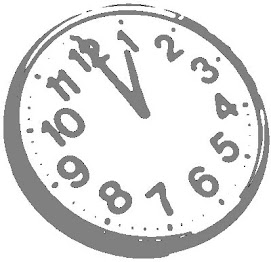Researchers in the Division of Sleep Medicine at Harvard Medical School and Beth Israel Deaconness Medical Center in Boston published a paper in this week's journal Science in which they cite the discovery of a second circadian clock in humans which appears to be triggered by fasting. The authors note that this discover could be used to reduce the effects of jet lag and could also help shiftworkers adapt to night work.
Human's primary internal clock is triggered by light. This is the clock we hear about most often -- getting exposure to bright light to increase alertness and avoiding light when trying to sleep. This second clock is triggered by food. The evolutionary underpinnings of the clock seem to be that for early humans not to have food available was a life-threatening situation. If they could not obtain food, their bodies kicked into an extra level of alertness to enable them to continue to search out food. Dr. Clifford Saper, one of the authors of the paper, noted it takes about 16 hours of fasting for this second clock to kick in and override the light-based clock.
This will be particularly important for shiftworkers on a rotating schedule as they prepare for the night shift, or a fixed schedule night shift worker returning to work after days off. A shiftworker might be able to reset his or her circadian rhythms faster by avoiding eating anything during the day prior to the night shift. This would raise alertness levels and the shiftworker would be able to then eat during the overnight shift. The same could also be used by air travelers to avoid jet lag. If the air traveler avoid eating ANYTHING on the flight on a flight from New York to Australia, he or she would better adapt upon arrival.
This will undoubtedly be studied further, so it's subject to modification, but the researchers are credible, and the work being published in the journal Science lends even more credibility. I think there's enough at this point that you might consider using this technique if you're having trouble adapting to night shifts.
Reference:
"Differential Rescue of Light- and Food-Entrainable Circadian Rhythms."
Patrick M. Fuller, Jun Lu, and Clifford B. Saper.
Science Vol. 320. no. 5879, pp. 1074 - 1077.
Published online on 23 May 2008.
Human's primary internal clock is triggered by light. This is the clock we hear about most often -- getting exposure to bright light to increase alertness and avoiding light when trying to sleep. This second clock is triggered by food. The evolutionary underpinnings of the clock seem to be that for early humans not to have food available was a life-threatening situation. If they could not obtain food, their bodies kicked into an extra level of alertness to enable them to continue to search out food. Dr. Clifford Saper, one of the authors of the paper, noted it takes about 16 hours of fasting for this second clock to kick in and override the light-based clock.
This will be particularly important for shiftworkers on a rotating schedule as they prepare for the night shift, or a fixed schedule night shift worker returning to work after days off. A shiftworker might be able to reset his or her circadian rhythms faster by avoiding eating anything during the day prior to the night shift. This would raise alertness levels and the shiftworker would be able to then eat during the overnight shift. The same could also be used by air travelers to avoid jet lag. If the air traveler avoid eating ANYTHING on the flight on a flight from New York to Australia, he or she would better adapt upon arrival.
This will undoubtedly be studied further, so it's subject to modification, but the researchers are credible, and the work being published in the journal Science lends even more credibility. I think there's enough at this point that you might consider using this technique if you're having trouble adapting to night shifts.
Reference:
"Differential Rescue of Light- and Food-Entrainable Circadian Rhythms."
Patrick M. Fuller, Jun Lu, and Clifford B. Saper.
Science Vol. 320. no. 5879, pp. 1074 - 1077.
Published online on 23 May 2008.









No comments:
Post a Comment